Underrated Italian towns for 2021: It’s a shorter list but still worthy as our hope for more travel next year takes flight

So through this long, oppressive year, has that picture of the Amalfi Coast remained on your computer or is it bent beyond recognition from too much fondling? Is the postcard of a Tuscan vineyard at sunset still on your refrigerator, teasing you daily as you mark another “X” on your lockdown calendar?
Relax. Rejoice. The vaccine has arrived. I’m predicting that sometime in 2021 the world will travel again. The U.S. may take a little longer than others to unlock the shackles but I’m hoping desperately needed new leadership will lead to desperately needed new results.
Still, travel should happen sometime next year and any time is a good time to visit Italy. So I am back to once again give readers insight into overlooked corners of Italian paradise. You can look back at other little gems in my blogs for 2017, 2018, 2019 and 2000.
Granted, I didn’t travel around Italy much this year. I only made it to three other regions: Abruzzo, Puglia and Campania. For three months of strict lockdown in the summer, I barely left my neighborhood. However, I still discovered enough small spots during day trips from Rome and my two lone domestic trips out of Lazio to provide more inside tips.
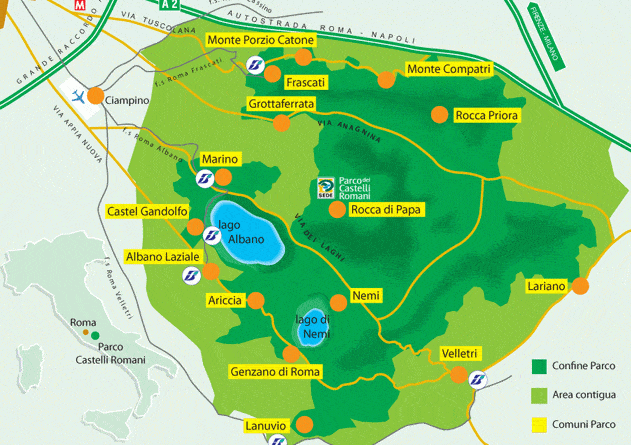
You’ll find many places made the list by food alone. Then again, this is Italy. How far would you travel for a perfect Abruzzese dish of pecora al cotturo (lamb stuffed with mountain herbs) in a cozy, romantic room with a fire?
So keep wearing the mask, get vaccinated and wait patiently for restrictions in your country and around the world to lift. Then print this list along with my others linked above and stop looking at photos. See the real Italy.
Below are underrated Italian towns to visit for 2021 (in alphabetic order and phone numbers do not include 39 country code):
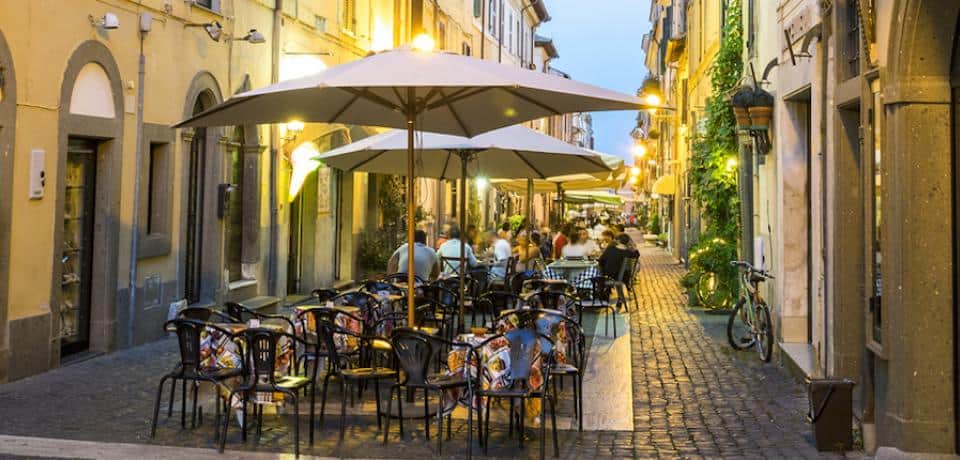
Castel Gandolfo, Lazio (pop. 8,900)
You’ll see why numerous popes used this town 15 miles southeast of Rome as the site for their summer residence. The 17th century Apostolic Palace is worth a visit just to see the view of Lake Albano below. But the palace is a museum now. Go see the 50-plus portraits of popes and various papal wear. It also features the BMW that Pope John Paul II (1978-2005) cruised around during his palace stays. The palace adjoins the Gardens of Villa Barberini which has been open for guided tours since 2014. The town itself, high in the Alban Hills, has two terrific restaurants: Le Fratte Ignoranti (Via Pio XI, 45, 06-932-2770), a simple-looking shack-like facade on the outside but a gorgeous view of the lake inside; Pagnanelli (Via Antonio Gramsci 4, 06-936-0004), a beautiful, high-end restaurant with a balcony overlooking the lake.
How to get there: It’s a straight 45-minute train ride (2-5 euros) from Rome’s Termini station.
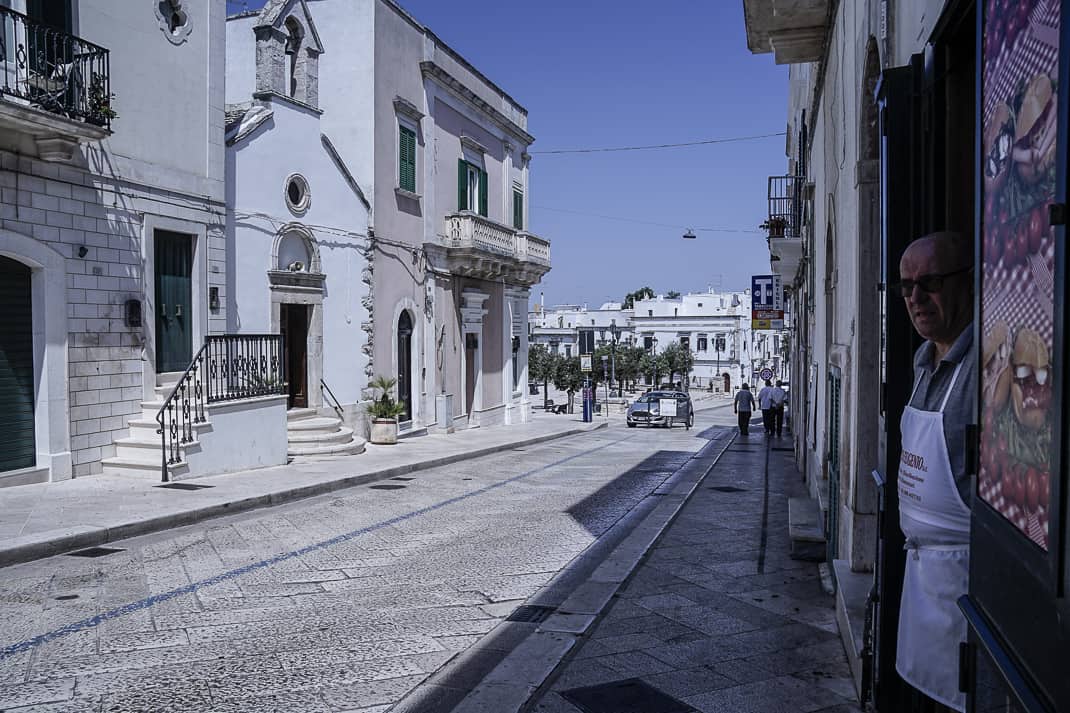
Locorotondo, Puglia (pop. 14,000)
This is the heart of Puglia’s underrated wine country. It’s also one of the prettiest towns in Italy. You can look it up: www.borghipiubellidiitalia.it. Its streets of white stones are blinding in the sun but they turn Locorotondo into a big hunk of confection good enough to eat. Its circular Centro Storico is closed off to cars, providing a quiet, romantic passeggiata any time of day. Stroll up the popular walking street of Villa Comunale and find the tiny To’ Wine Bar. Try Puglia’s signature Primitivo red or ask the friendly staff for a Minutolo, a crisp white wine from a vineyard near Locorotondo.

How to get there: Bari is a one-hour flight from Rome ($54 round trip) or four-hour train ride (106 euros round trip). Locorotondo is a 1½-2 hour train ride (5 euros) from Bari. I recommend, however, renting a car in Bari. Locorotondo is 5 hours and 20 minutes by car from Rome.
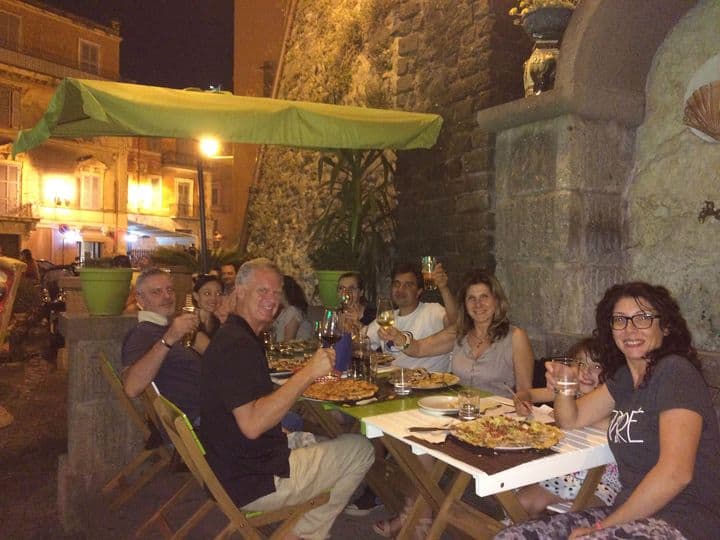
Marino, Lazio (pop. 44,000)
Located just three miles from Castel Gandolfo, Marino is famous for its white wine of the same name and spectacular views. I took Marina to Marino’s impossibly romantic Grand Hotel Helio Cabala for a night in January’s off season for only 60 euros. The hotel’s statue-lined terrace has sweeping views of the valley below and Rome beyond. The cute cobblestone Centro Storico also has an excellent pizzeria called Serafino’s (Via Palazzo Colonna 8, 06-938-8424). Charles VIII of France vacationed in Marino, possibly lured by the wine that is celebrated with a festival on the first Sunday of every October. On this day, for one hour all of Marino’s fountains spill wine instead of water.
How to get there: Located 13 miles southeast of Rome, it’s a 35-minute train ride (2-5 euros) from Termini.
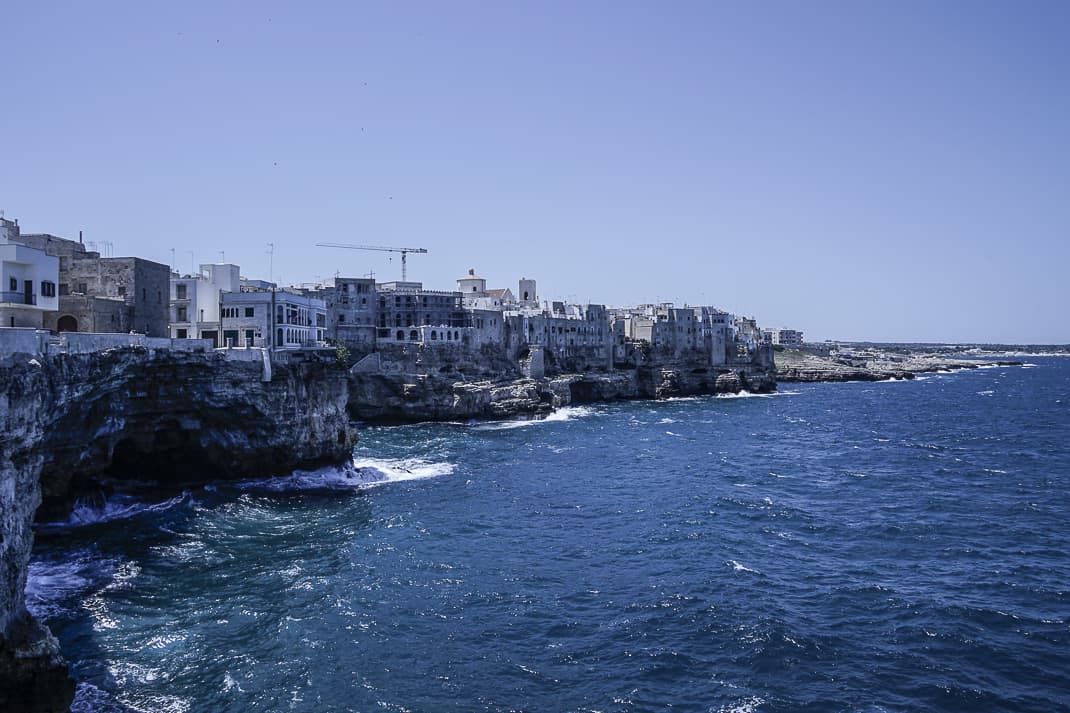
Polignano a Mare, Puglia (pop. 18,000)
Couple this with a trip to Locorotondo. Polignano a Mare is 20 miles away on a craggy stretch of Adriatic coastline. It has beautiful wind-swept views of the sea and secluded coves with white pebbly beaches. We went in July when the Covid curve was flat and the place was packed. But in spring or early fall it is ideal. Take a beach towel and grab some sun on the little beach near the Centro Storico or order a panino at Lime, a charming outdoor cafe overlooking the water. From your table look for Mark Twain’s quote about the town translated into Italian: “This place was created before paradise.”
How to get there: It’s 20 miles south of Bari and is a straight 45-minute train ride (2.50 euros).

Prata d’Ansidonia, Abruzzo (pop. 500)
It’s best to rent a car and drive high into the Abruzzese hills where you’ll find this village at 2,775 feet. Hopefully, an earthquake won’t hit while you’re here. Earthquakes in the 4th century, in 1703 and 2009 either abandoned or severely damaged this charming town. Tack it on to a trip to L’Aquila which has recovered nicely from the ‘09 quake. Check out the 16th century Camponeschi Castle with a great view of Prata. In town you should see the Church of St. Paul of Peltuinum, dating back to 1109. We go just to dine at Osteria il Borgo dei Fumari, one of my five favorite restaurants in Italy. It’s in a 600-year-old stone building with a separate cave-like room across the narrow path from the main restaurant. Dine Abruzzese style on local meats such as beef, lamb and mutton or their signature macaroni pasta. All are sprinkled with local spices such as saffron and rosemary.
How to get there: As stated above, it’s better to rent a car in Rome for the 100-mile journey. Or you can take a train from Rome’s Tiburtina station 1 hour and 45 minutes to L’Aquila then take a taxi 25 minutes (45-60 euros) to Prata d’Ansidonia.
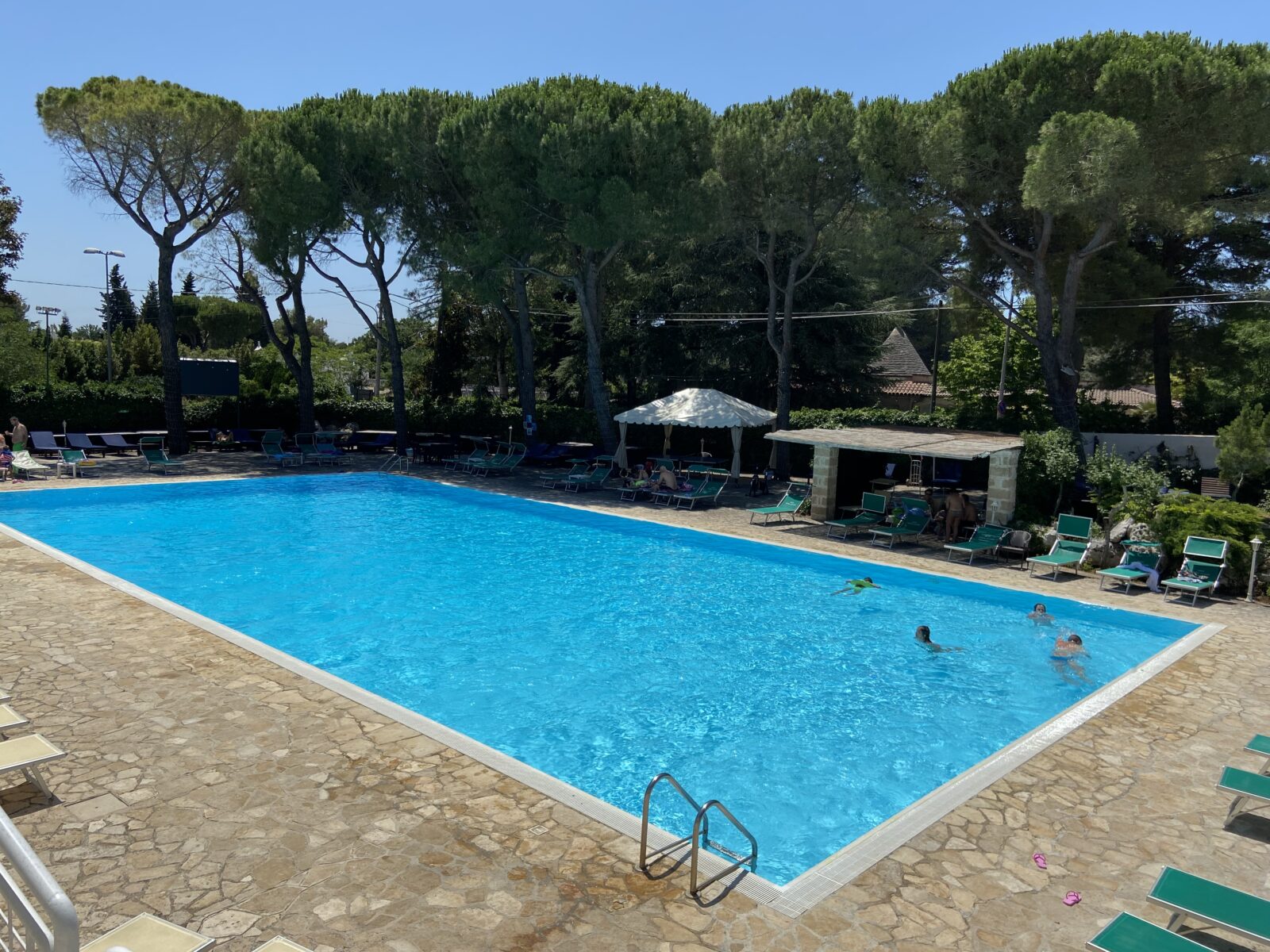
Selva di Fasano, Puglia (pop. 300)
Many people use Fasano (pop. 40,00) four miles down the hill as their base to explore the trulli, the cute, little pointy houses farmers and shepherds lived in from the 14th century. But Selva di Fasano is much quieter, prettier and authentic. It’s cooler at 1,400 feet and covered in oak, pine, cypress, cedar and cherry trees. A brick pedestrian road takes strollers past butcher shops that sell sizzling meats to customers. Gina Lollobrigida was a frequent visitor. This was our base for one of our two excursions this year. We stayed at the beautiful Hotel Sierra Silvana where you can swim in its huge pool and stay in a trulli.
How to get there: Located 40 miles from Bari, take the train 2 hours, 48 minutes to Fasano (10 euros) and a 15-minute taxi ride to Selva di Fasano. I rented a car in Bari and paid 70 euros over three days in the height of the tourist season in July.
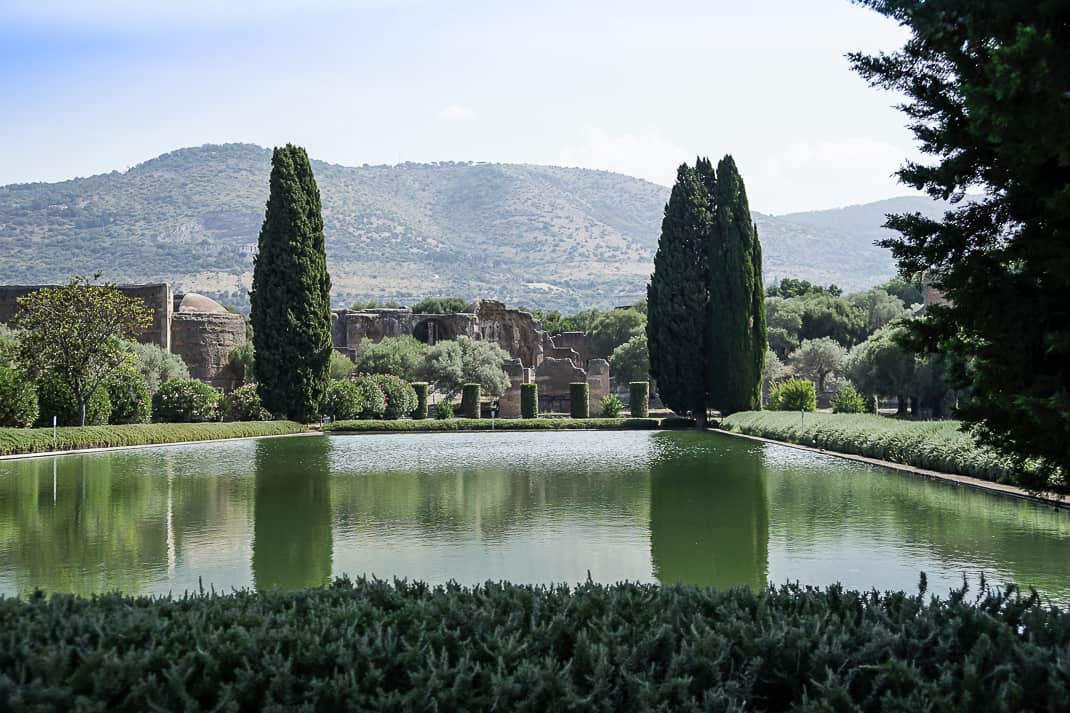
Tivoli, Lazio (pop. 56,000)
This is a great day trip from Rome and features one of the best-preserved sites from Ancient Rome. Hadrian’s Villa was built by Emperor Hadrian during his reign from 117-138 AD and one stroll around convinces you of the wealth Roman emperors had. The villa covers 250 acres and features 30 buildings, 100 fountains, numerous swimming pools, a bathhouse and a nocturnal vestibule with a skylight. Also check out nearby Villa D’Este at the top of the town’s center. They are beautifully terraced Renaissance gardens with tree-lined roads and landscaped grottoes. Tivoli is at 770 feet in the Sabine Mountain foothills so it’s a cool respite from steaming Rome in the summer. But avoid July and August. It does get filled with Italian tourists. After a couple hours at the site, drive down the street to Villa Esedra, an elegant restaurant where you can dine outside and drink the local white wine.
How to get there: It’s 20 miles northeast of Rome and can be visited by train (36 minutes-1 hour, 12 minutes, 2.60-3.00 euros) from Termini.


December 29, 2020 @ 9:59 am
Thank you for this post, I’m a follower of your posts although this is the first time I actually comment. I wanted to ask you, are there many ‘parks’ in Italy like there are here in the states? I’ve noticed it is so hard to google these things and get an idea of how it is, and I could be wrong, but it seems there aren’t that many playground type parks for kids? Your insight is always appreciated
December 29, 2020 @ 6:47 pm
Paganelli in Castel Gandolfo was our go-to upscale restaurant for special occasions when we lived nearby. It’s family owned and operated, fantastic setting, great food, and if you ask nicely they will let you wander through the incredible wine caves carved into the tuff below the restaurant. They claim to have 30,000 bottles, including several on display that have been signed by famous celebrity guests. It is not inexpensive, however.
Another favorite of the wives’ club at the NATO Defense College was La Gardenia, literally next door to Paganelli. (At the top of the hill on the road from Lake Albano, 100 meters from the train station.)
December 30, 2020 @ 10:55 am
Really enjoyed reading this post as I am dreaming of a trip to Italy in a year or two. John, may I address a question to you and your readers? Earlier this year The Guardian posted an article entitled Dreams of Italy: readers travel tips (https://www.theguardian.com/travel/2020/jun/11/dreams-of-italy-readers-travel-tips). One submission from a Guardian reader recommends walking the Via Appia Antica to Castel Gandolfo (approx. 11 miles) with a return trip by train. Readers, has anyone taken this walk? Does anyone have any comments or details they would be willing to share?
January 13, 2021 @ 3:36 pm
Rented a trull near to Locorotondo a few years back. Lovely place, also useful for trains (Privately owned for travel around the ‘heel and toe’) to avoid parking and navigating in larger towns Lecce is marvellous for Baroque architecture, plus Roman remains.